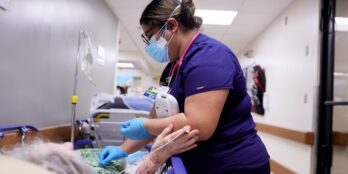
How to Support Authentic Resident Engagement
 3 min
3 min
One goal that Linked Senior has had since it began is to find ways to collaborate with residents and caregiving staff so that purposeful engagement can happen each day. As Linked Senior grew as a company it became increasingly clear that this kind of engagement was only possible when providers came to understand the true value of measuring engagement. Management consultant Peter Drucker said it best: “What gets measured, gets improved.” The question for providers is, what should be measured? And what is the difference between authentic engagement compared to time-filling activities? Providers know that engagement needs to be person-centered, promote well-being, be easily implemented and purposeful. To know how well we are doing in each of those areas, it is helpful to use the three steps outlined below.
The Value of Data in Long-term Care
Sometimes there is pushback when we talk to providers about the value of data, especially when it comes to tracking attendance and program participation. Some providers say that counting participants entering a room is no way to measure engagement. The truth is though, counting attendance is the first step toward truly providing the most meaningful type of care for older adults. If this step is skipped, some residents could be missing out on meaningful engagement which could lead to isolation and other negative health outcomes. Assisted living, memory care and skilled nursing facility providers must measure engagement, because family members, caregivers and regulators now expect it.
Quality vs. Quantity
The second step is about being authentic. That means being trustworthy as well as factual. As always, this is where quantity and quality come into play. In our discipline it starts by actually knowing the residents and providing our staff with adequate tools, training and time, so they can provide authentic engagement opportunities. Measurement should include carefully assessing resident needs, planning individualized engagement activities, implementing that plan and evaluating success. Providers should measure their success, for every single resident, in real-time and make adjustments as needed. What is measured can then be improved, and every provider should commit to consistently improving and optimizing the care they offer.
Focusing on authenticity helps us understand the quality of engagement. That can be done by measuring satisfaction of residents when they can express themselves. The challenge often comes though, when they cannot. When this is the case, we need to train our staff to better understand how well they are doing when it comes to meaningfully engaging the resident. They can do this by tracking eye movement, witnessing the impact of engagement on a resident’s behavior, or observing a change in their body movements. To do this effectively providers must train frontline staff and provide them with adequate support. Fortunately, most providers are taking this approach and have drastically improved in the past years.
The Recipe for Person-Centered Care
The recipe for person-centered, meaningful resident engagement contains two essential ingredients. First, engagement opportunities must be based on a comprehensive understanding of the needs and preferences of each resident. Second, a data-driven approach must be used to assess the success of engagement activities on positively impacting the health and well-being of each resident. Ultimately, the success of products and services that depend on how well a provider collaborates with residents to understand what exactly they need to live purposefully each day.
Collaborating With Residents is Key
The third and final step in achieving authentic resident engagement is measuring how well we collaborate with the older adults we serve. By taking a data driven approach to engagement, tracking attendance and training staff to measure the quality of engagement, providers are able to complete this step. You can also implement a scoring system that can determine how well a community is meeting the preferences of the residents they serve.
December 20, 2019





